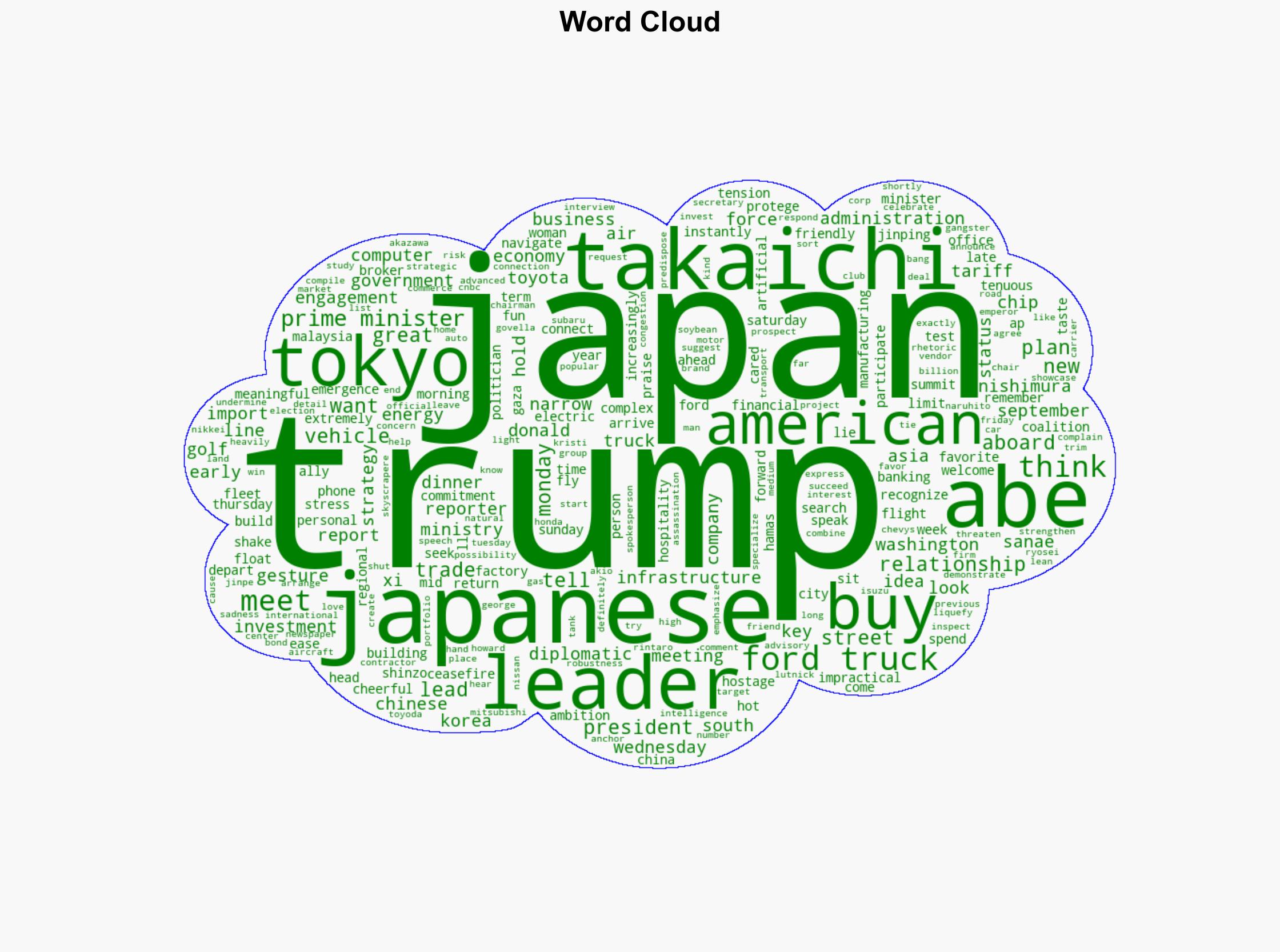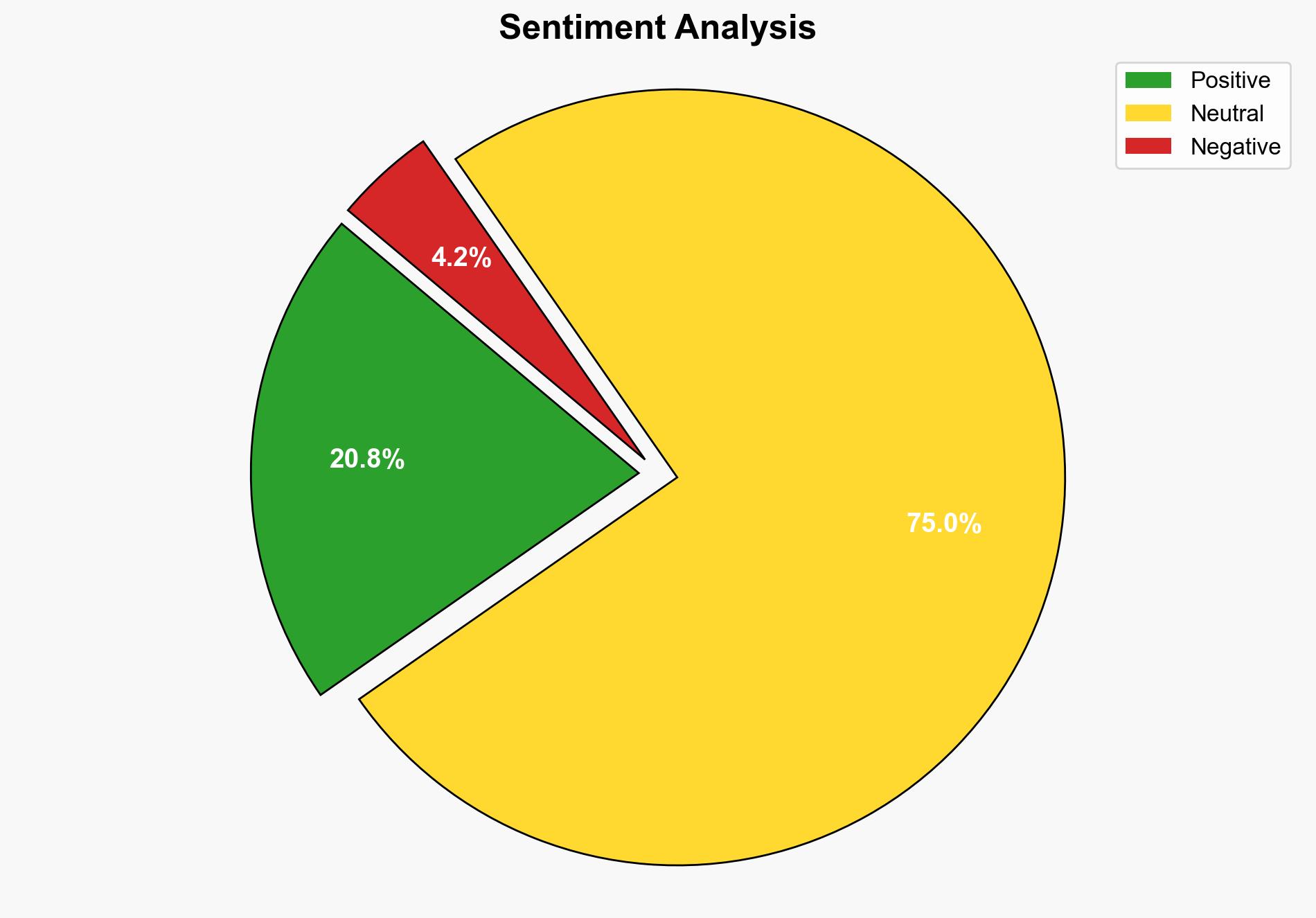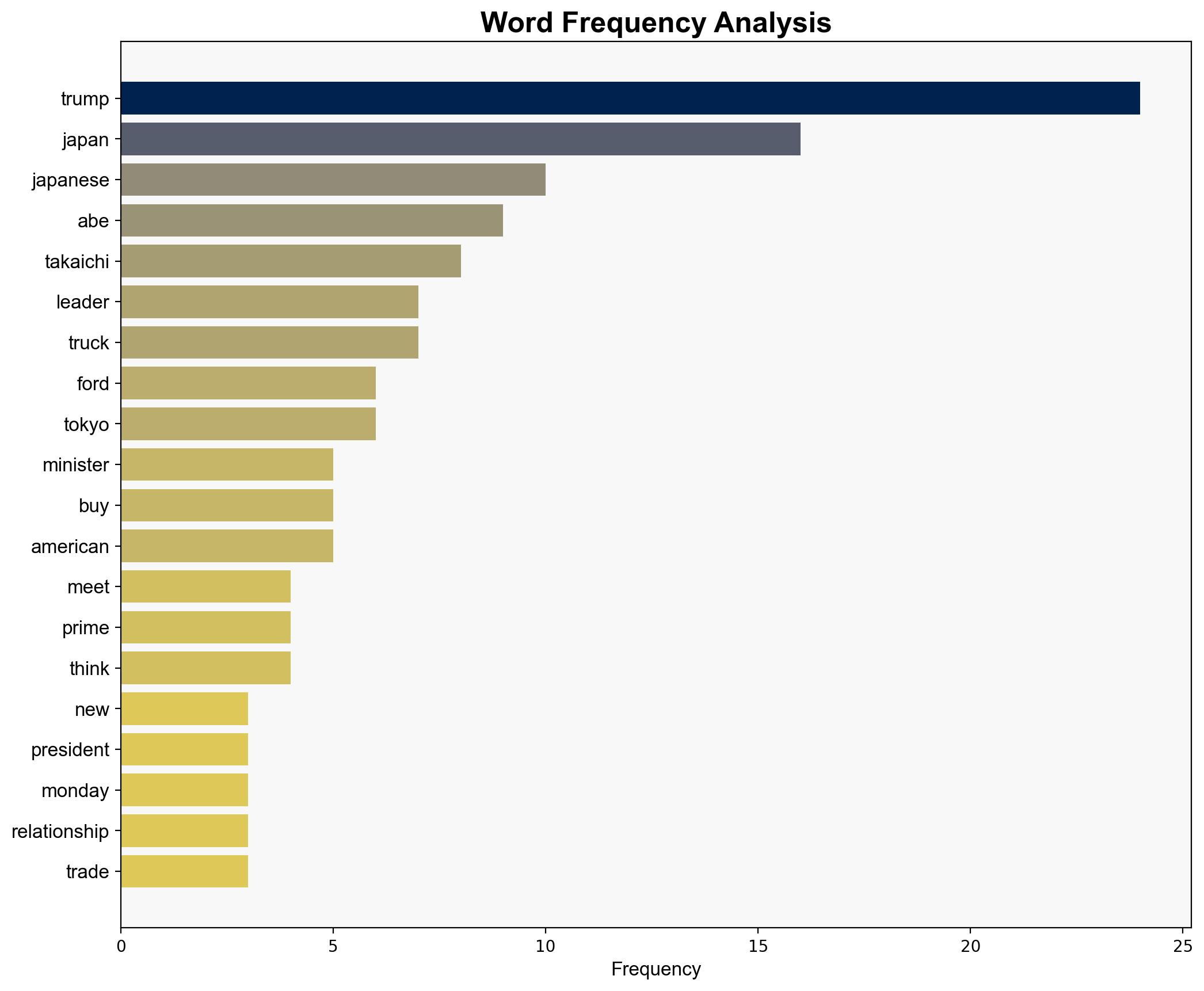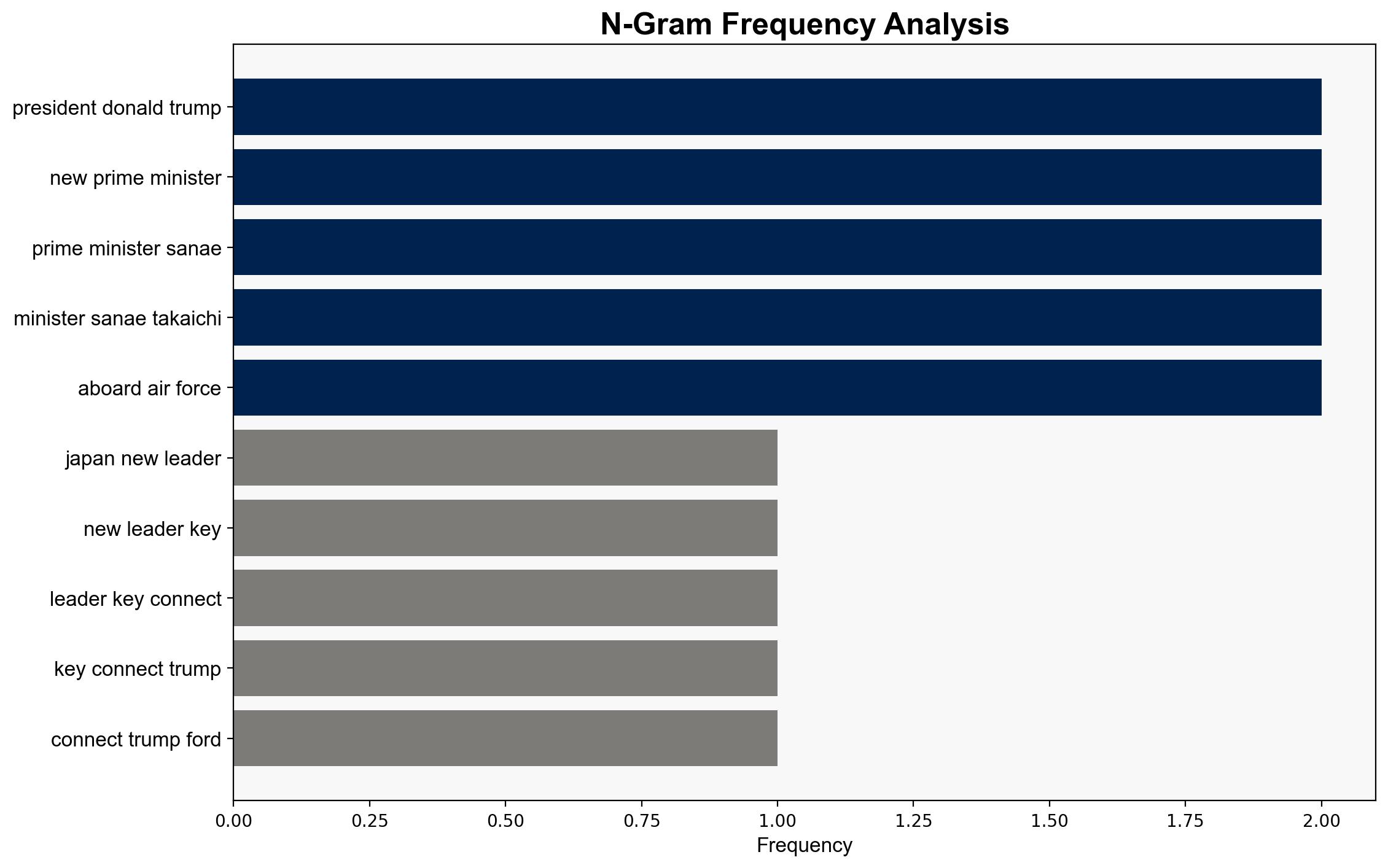For Japan’s new leader the key to connecting with Trump could be a Ford F-150 truck – ABC News
Published on: 2025-10-27
Intelligence Report: For Japan’s new leader the key to connecting with Trump could be a Ford F-150 truck – ABC News
1. BLUF (Bottom Line Up Front)
The strategic judgment is that Japan’s new Prime Minister, Sanae Takaichi, is attempting to strengthen diplomatic ties with the U.S. by leveraging symbolic gestures, such as the potential purchase of Ford F-150 trucks. This approach aims to ease trade tensions and align with U.S. economic interests. The most supported hypothesis is that this gesture is primarily symbolic, intended to curry favor with President Trump, rather than a practical economic strategy. Confidence level: Moderate. Recommended action: Japan should diversify its engagement strategies beyond symbolic gestures to ensure sustainable economic and diplomatic relations.
2. Competing Hypotheses
1. **Symbolic Gesture Hypothesis**: The proposal to purchase Ford F-150 trucks is primarily a symbolic gesture to strengthen diplomatic relations with President Trump, aligning with his preference for American products and easing trade tensions.
2. **Economic Strategy Hypothesis**: The proposal is part of a broader economic strategy to increase American imports, thereby reducing the threat of tariffs and gaining favorable trade terms.
3. Key Assumptions and Red Flags
– **Assumptions**: It is assumed that President Trump values symbolic gestures highly and that such gestures can significantly influence diplomatic relations. It is also assumed that the Japanese government can effectively navigate logistical challenges associated with importing large American vehicles.
– **Red Flags**: The impracticality of using large trucks in Japan’s narrow streets raises questions about the feasibility of the proposal. Additionally, there is a risk of over-reliance on symbolic gestures without substantive economic agreements.
4. Implications and Strategic Risks
– **Economic Implications**: While symbolic gestures may temporarily ease tensions, they do not address underlying trade imbalances or structural economic issues.
– **Geopolitical Risks**: Focusing too heavily on U.S. relations might strain Japan’s relations with other regional powers, particularly China, especially given the upcoming meeting between Trump and Xi Jinping.
– **Psychological Dimensions**: Misjudging the impact of symbolic gestures could lead to misaligned expectations and potential diplomatic fallout if anticipated outcomes are not realized.
5. Recommendations and Outlook
- Japan should develop a comprehensive trade strategy that includes both symbolic and substantive economic measures to ensure balanced relations with the U.S.
- Scenario-based projections:
- **Best Case**: Symbolic gestures lead to reduced tariffs and improved trade terms.
- **Worst Case**: Symbolic gestures fail to impact trade policies, leading to increased tariffs and strained relations.
- **Most Likely**: Symbolic gestures provide temporary relief but require follow-up with substantive economic agreements.
6. Key Individuals and Entities
– Sanae Takaichi
– Donald Trump
– Akio Toyoda
7. Thematic Tags
national security threats, economic diplomacy, U.S.-Japan relations, trade negotiations




